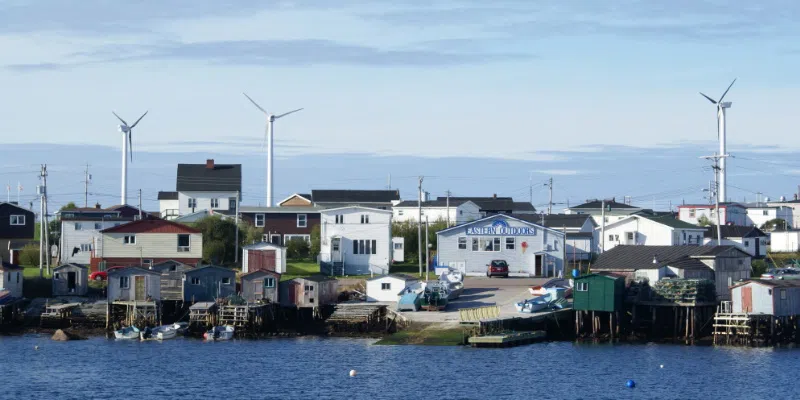The province has laid out the financial terms for companies interested in getting into the wind-hydrogen business.
The so-called fiscal framework is built on the premise that the more money companies make, the more that accrues to the province through corporate taxes and royalties.
It includes initial land reserve and lease fees for successful bidders, with water royalties kicking in once companies have recovered their investment costs.
That’s in recognition of the newness of the wind-to-hydrogen industry and the up-front financial risks borne by proponents.
“The sharing of financial returns between investors and the province is a balance between benefits for the province for use of its resources while recognizing project investment and risk,” says Industry Minister Andrew Parsons.

(NDP MHA Jordan Brown.)
That doesn’t sit well with the NDP, who were quick out of the gate with reaction.
“It is concerning that the water royalties don’t kick in until after a project’s capital costs are paid off,” said Labrador West MHA Jordan Brown. “It’s concerning that we will give up a natural resource for a long period time without collecting royalties.
“Water is a natural resource, and if it’s being commercially exploited there needs to be a price on it from the get-go.”

(Via Energy Minister Andrew Parsons Twitter.)
The fiscal setup was released to both the public and proponents today, and differs slightly from a draft that companies would’ve seen in December.
Parsons says proponents’ initial reactions ran the gamut from cold to warm, but officials insist nothing in the final wording would’ve blindsided them.
Of key concern is the issue of decommissioning, and any fund or bonds that would protect the province if a project should fail.
Parsons says while that’s not finalized yet, it will eventually.

(Areas of interest, western and eastern NL.)
The proponents, of which there are several dozen, also have more time to finalize their Crown land bids, with the deadline extended by several weeks to March 23rd.
Parsons says the new framework will ensure people in this province will be the primary beneficiary of its resources, calling it a “predictable and transparent fiscal system to inform investment decisions and resource development for wind-hydrogen projects.”
Government says Oman on the Arabian Peninsula is currently the only other jurisdiction with a fiscal framework in place for wind-hydrogen development.
The NL framework includes:
Crown Land Fees:
- Annual charge of 3.5 per cent of the market value of reserved lands.
- Annual charge of 7 per cent of the market value of leased lands.
- Applicable to Crown lands.
Wind Electricity Tax:
- $4,000 per megawatt on installed capacity.
- Annual charge, payable at in-service.
- Applicable to all wind projects (= 5 megawatts) producing electricity for the purposes of producing hydrogen.
Water Use Fee:
- Fee of $500 per 1000m3 of water licensed and used.
- Fee of $50 per 1000m3 for water licensed and not used.
- Applicable to all hydrogen facilities.
- Payable with permit issuance as an annual charge. Fees adjusted annually by the Canadian consumer price index as per current Environment and Climate Change regulatory practice.
Water Royalty:
- Payments begin with cost recovery.
- Payable based on the calculated residual value of the water.
- Rates linked to revenue over cost index calculation (10 per cent to 25 per cent):
Tier 1: R-factor = 1; Rate = 10 per cent (applied after 1x cost recovery)
Tier 2: R-factor = 2; Rate = 20 per cent (applied after 2x cost recovery)
Tier 3: R-factor = 3; Rate = 25 per cent (applied after 3x cost recovery)
The government notes they will have the ability to enter into agreements to modify terms in the same manner as offshore oil projects.























